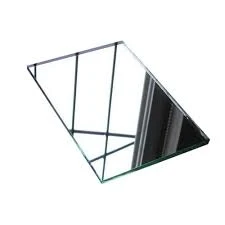

The Economics of Tinted Glass Understanding Prices and Market Trends
Tinted glass has become a staple in modern architecture, automotive design, and interior decor, appreciated not just for its aesthetic appeal but also for its functionality. By reducing glare, minimizing UV exposure, and enhancing privacy, tinted glass provides numerous benefits that appeal to both commercial and residential buyers. However, the price of tinted glass can vary significantly based on a myriad of factors. This article will delve into the factors affecting the price of tinted glass and the resulting market trends.
Factors Influencing Tinted Glass Prices
1. Type of Tinted Glass The price of tinted glass can greatly vary depending on the type. There are several categories, including standard tinted glass, reflective glass, and low-E (low emissivity) tinted glass. Each type has its unique production methods and materials, which influence the final cost. For instance, low-E glass often commands a higher price due to its energy-efficient properties, which can lead to significant long-term savings in heating and cooling costs.
2. Thickness and Size The thickness of the glass is another significant factor that impacts pricing. Thicker glass requires more raw materials and takes longer to manufacture, thus raising the cost. Similarly, the size of the glass panel can also affect the price. Larger sheets typically come with a premium due to increased material and handling costs during production and transportation.
3. Customization and Patterns Customized tinted glass—featuring specific colors, patterns, or treatments—tends to be more expensive than standard options. Architectural projects often require unique specifications to meet design and aesthetic goals, driving up costs. The more intricate the design and the more specific the customer needs, the higher the price point.
4. Manufacturing Process Advances in technology have revolutionized the manufacturing processes of tinted glass. Techniques such as chemical coating, lamination, or digital printing add layers of complexity and, consequently, cost. Manufacturers that invest in new technologies to produce high-quality tinted glass may pass these expenditures onto consumers.

5. Market Demand Like any commodity, the demand for tinted glass can fluctuate based on market trends. During periods of high construction activity or renovations, demand often soars, driving up prices. Economic climates, government regulations, and trends in interior design play significant roles in influencing market demand and availability.
6. Regional Differences Prices can also vary significantly by region due to local market conditions, availability of raw materials, and shipping costs. In some areas, tinted glass may be more readily available through local suppliers, reducing costs, while in others, import duties and shipping charges could inflate prices.
Current Market Trends
The tinted glass market has experienced notable trends in recent years. An increase in eco-conscious building practices has led many consumers to seek energy-efficient glass options, which typically command a higher price. Moreover, as modern architecture leans toward sleek, minimalist designs, the demand for tinted glass in residential and commercial projects continues to rise.
Advancements in smart glass technology, which features adjustable tinting capabilities, are also reshaping consumer preferences and pricing strategies in the market. While these products are often at a premium, their increasing popularity suggests a willingness among consumers to invest in higher-end solutions for comfort and efficiency.
Conclusion
The price of tinted glass is influenced by a complex interplay of factors, including type, size, manufacturing techniques, customization, market demand, and regional dynamics. As the market continues to evolve with technological advancements and changing consumer preferences, potential buyers should stay informed about trends and pricing models to make the best investment decision for their specific needs. Understanding these factors can demystify the often-complex pricing landscape of tinted glass, helping consumers navigate their purchasing decisions effectively.